Features of the Heriodian Temple Mount Complex
Herod expanded the Temple Mount in three directions: north, south, and west. The Kidron Valley prevented eastward expansion. 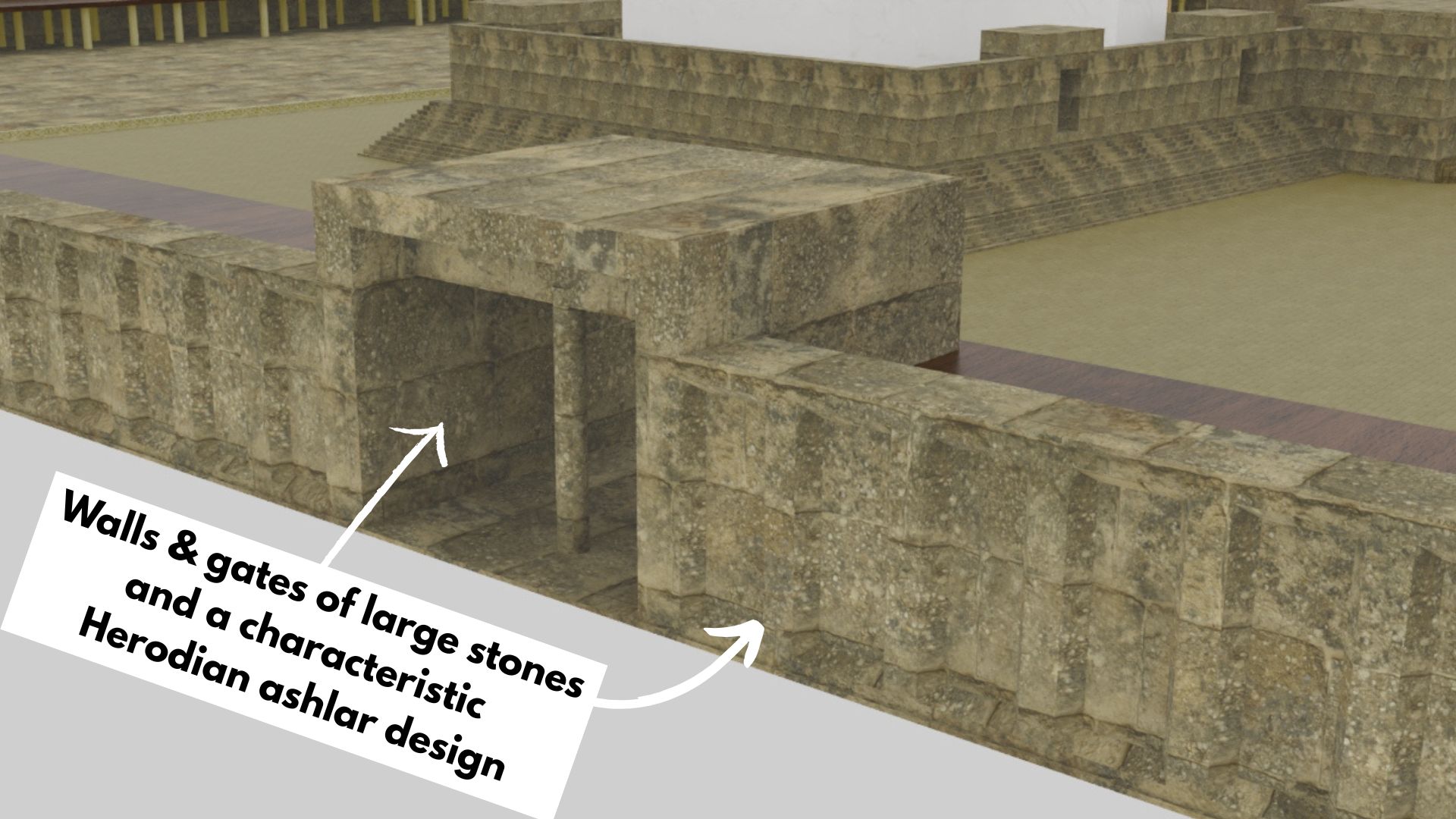 The retaining walls for the Temple mount were made up of huge rectangular stones, most weighed between 2-5 tons and were 1 m. high, placed in rows. The biggest stone found to date weighs about 400 tons. This stone is 12 m long, 2 m high, and 4 m thick.
The retaining walls for the Temple mount were made up of huge rectangular stones, most weighed between 2-5 tons and were 1 m. high, placed in rows. The biggest stone found to date weighs about 400 tons. This stone is 12 m long, 2 m high, and 4 m thick.
The level surface on the top of the Temple Mount covered roughly 144,000 square meters. There were a number of gates through which people could enter the Temple Mount. 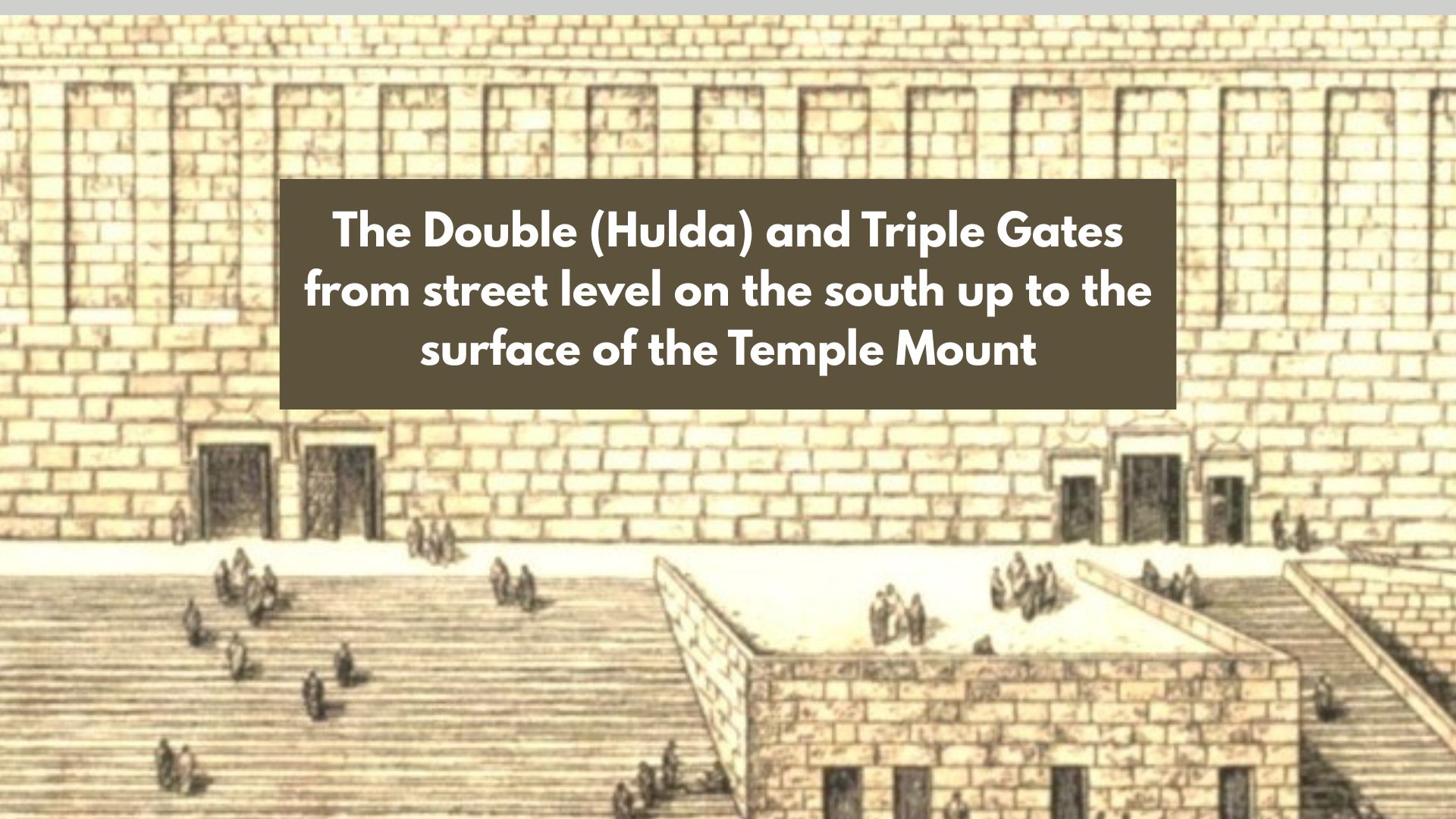 However, the primary entrance for pilgrims was the Hulda Gates on the south side of the Temple Mount. Broad staircases led up to doors (a double door on one side and a triple door on the other. Through these doors, visitors traveled along sloped underground passageways to reach the surface.
However, the primary entrance for pilgrims was the Hulda Gates on the south side of the Temple Mount. Broad staircases led up to doors (a double door on one side and a triple door on the other. Through these doors, visitors traveled along sloped underground passageways to reach the surface.
The surface of the Tempel Mount was surrounded by large porticoes. The largest of these was along the south wall of the Temple Mount and is known as the 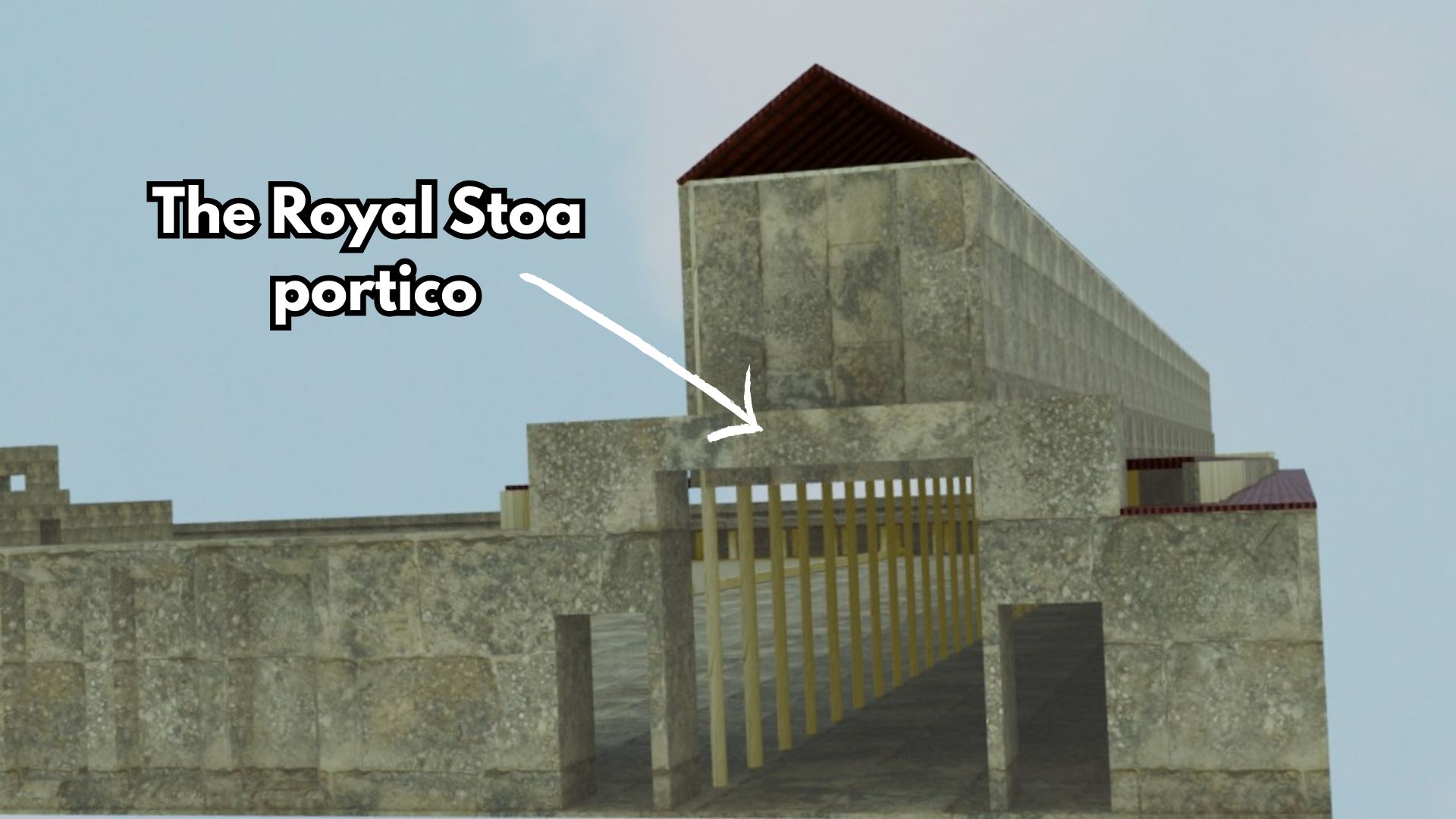 Royal Stoa. It contained four colonnades (one set of columns was attached to the wall), making three aisles. The central aisle was twice as high and 1.5 times as wide as the outer aisles. The Royal Stoa was where visitors could exchange secular money for temple coins (since the Ten Commandments forbade graven images and many secular coins contained images of rulers), and buy supplies for sacrifices. There was also an area at the far end for the Sanhedrin to meet.
Royal Stoa. It contained four colonnades (one set of columns was attached to the wall), making three aisles. The central aisle was twice as high and 1.5 times as wide as the outer aisles. The Royal Stoa was where visitors could exchange secular money for temple coins (since the Ten Commandments forbade graven images and many secular coins contained images of rulers), and buy supplies for sacrifices. There was also an area at the far end for the Sanhedrin to meet.
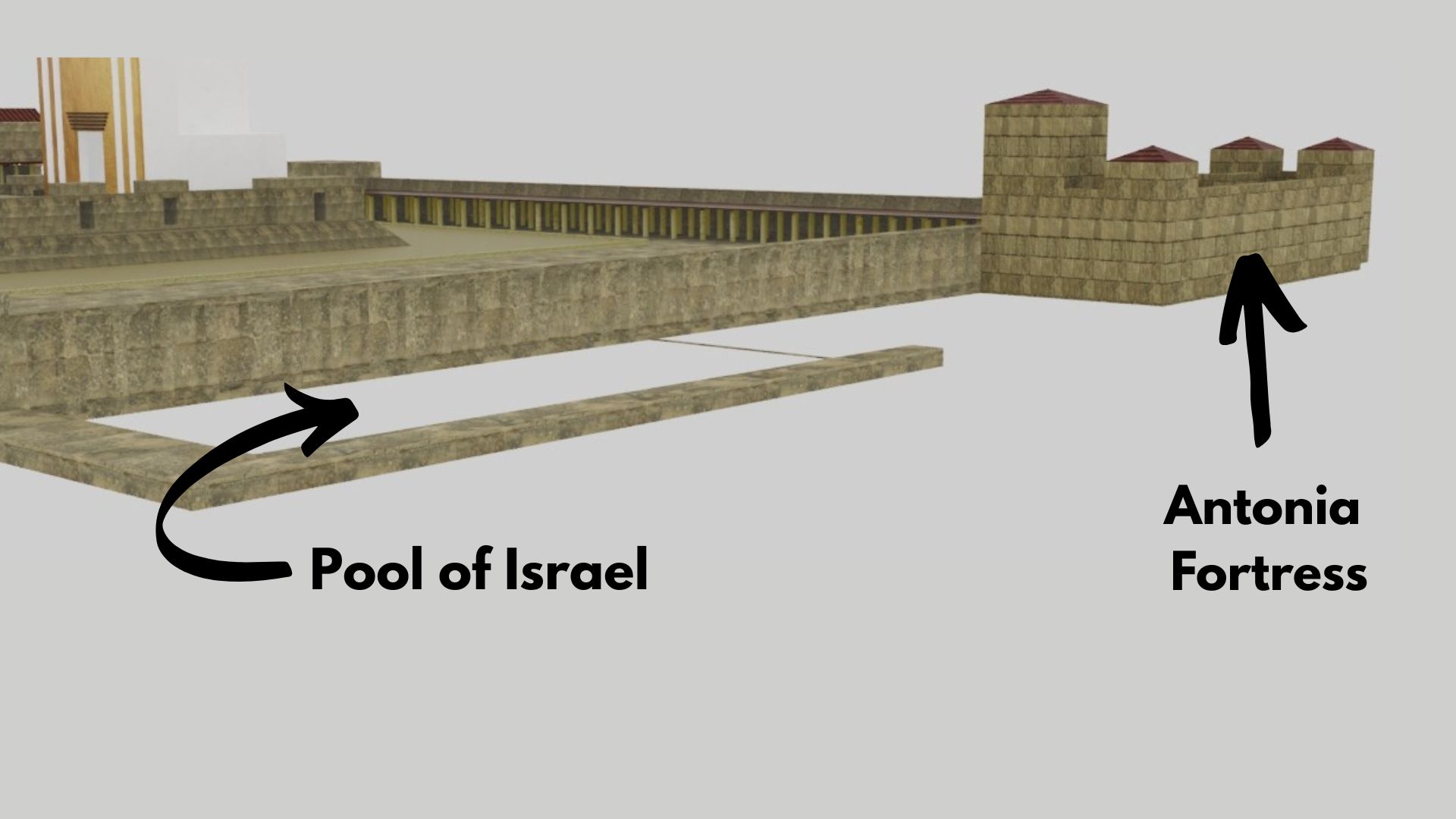 At the northwestern corner of the Temple Mount, Herod built the Antonia fortress. Five hundred soldiers were stationed there to protect the Temple and its surroundings. From its towers, one could view everything happening inside the Temple Mount.
At the northwestern corner of the Temple Mount, Herod built the Antonia fortress. Five hundred soldiers were stationed there to protect the Temple and its surroundings. From its towers, one could view everything happening inside the Temple Mount.
Beyond the northeast corner of the Temple Mount was a reservoir called the Pool of Israel.
Features of the Inner Temple Courts
Moving further inward on the Temple Mount were a series of concentric courts, of progressive sanctity. The area on the Mount outside of the Temple Courts was the Court of the Gentiles, because anyone was permitted to visit that space. It was not considered sacred. 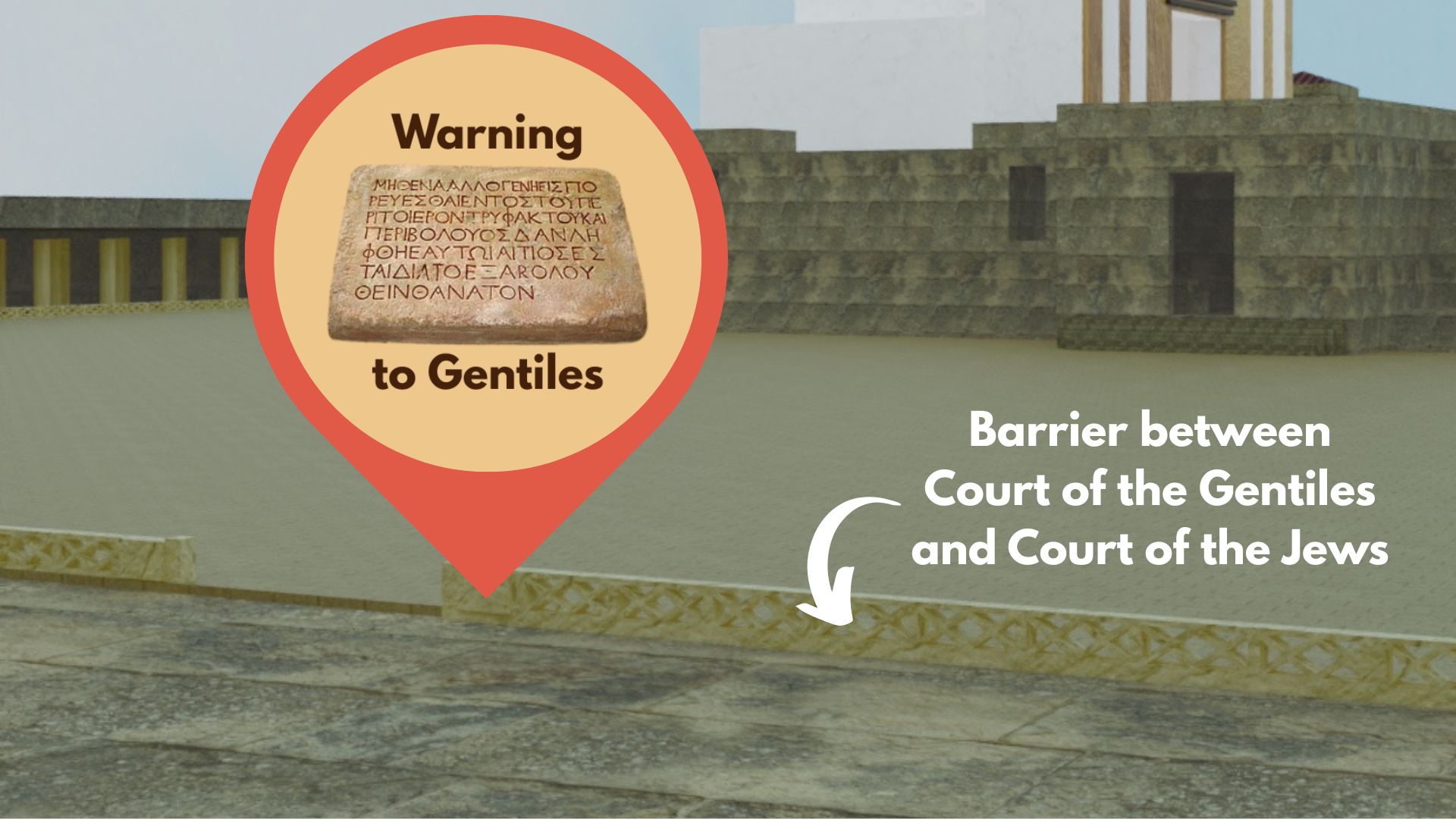 The second court was square and surrounded by a latticed fence with signs that warned Gentiles not to proceed further on penalty of death. Immediately inside this fence was the Court of the Jews, where all Jews could enter.
The second court was square and surrounded by a latticed fence with signs that warned Gentiles not to proceed further on penalty of death. Immediately inside this fence was the Court of the Jews, where all Jews could enter.
Inside this area was the Temple proper, surrounded by high walls. The Temple faced east, and the eastern half of the enclosure was the Court of the Women. 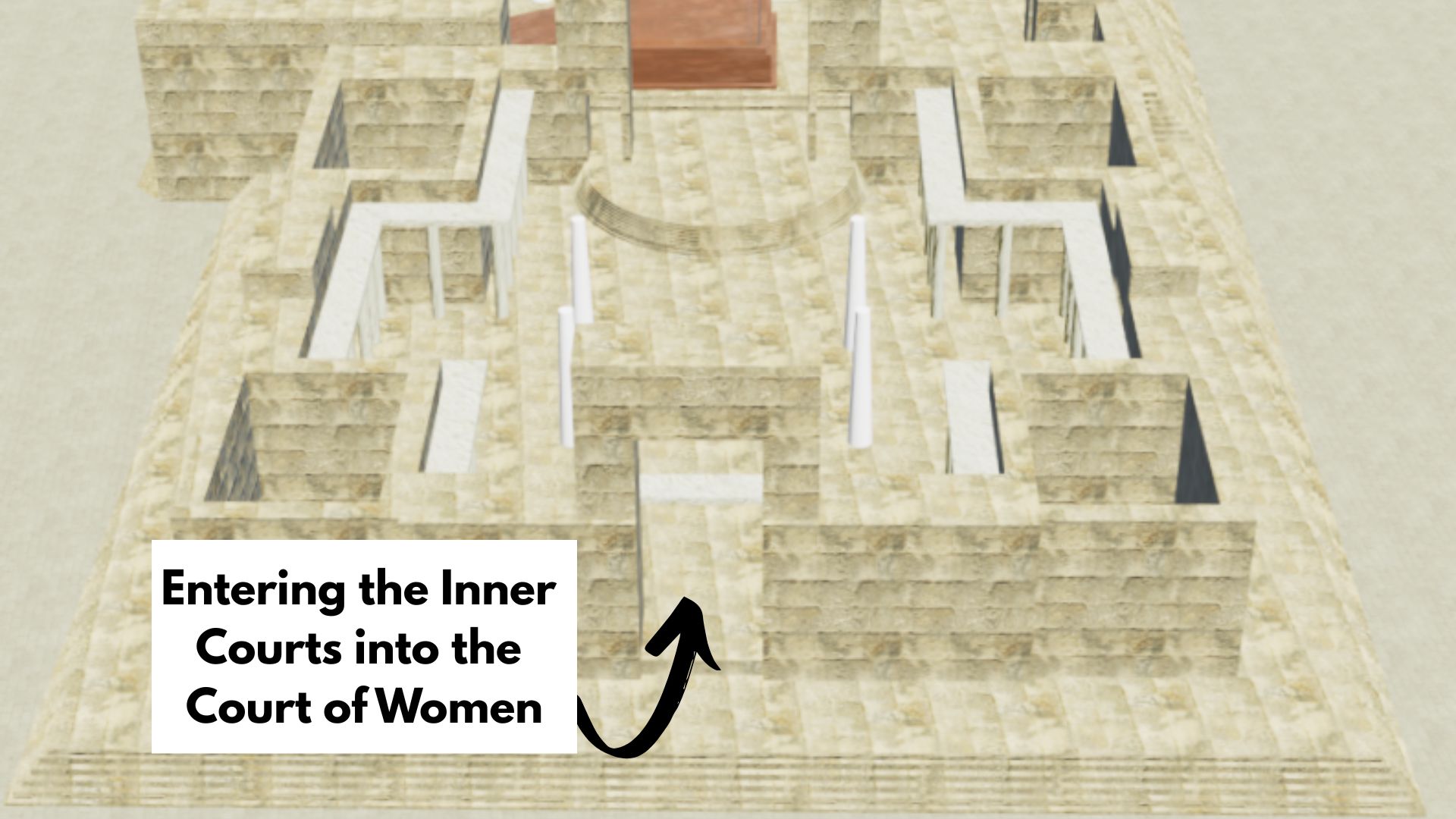 All Jewish people who were considered pure according to the Law of Moses could enter this area. However, only men could proceed further. Moving west, a set of semi-circular stairs led to the Nicanor Gate, the largest of the gates entering the Temple, which was plated with brass. Inside this gate was a wide and narrow area called the Court of the Israelites, where Jewish men brought animals for required sacrifices.
All Jewish people who were considered pure according to the Law of Moses could enter this area. However, only men could proceed further. Moving west, a set of semi-circular stairs led to the Nicanor Gate, the largest of the gates entering the Temple, which was plated with brass. Inside this gate was a wide and narrow area called the Court of the Israelites, where Jewish men brought animals for required sacrifices.
A few more steps led into the Court of the Priests, where only priests on duty could enter. It contained a large altar built with unhewn stones, a large basin fed by a subterranean cistern, and other areas and objects related to the Temple sacrifices. Gatehouses and storerooms stood along the north and south walls of the Court. One, the Chamber of Hewn Stone, stood partially inside and partially outside the Court of the Priests. The Sanhedrin, the Jewish high court met here (the room extended beyond the Temple wall so that judges could sit – no one was allowed to sit inside the Temple itself). 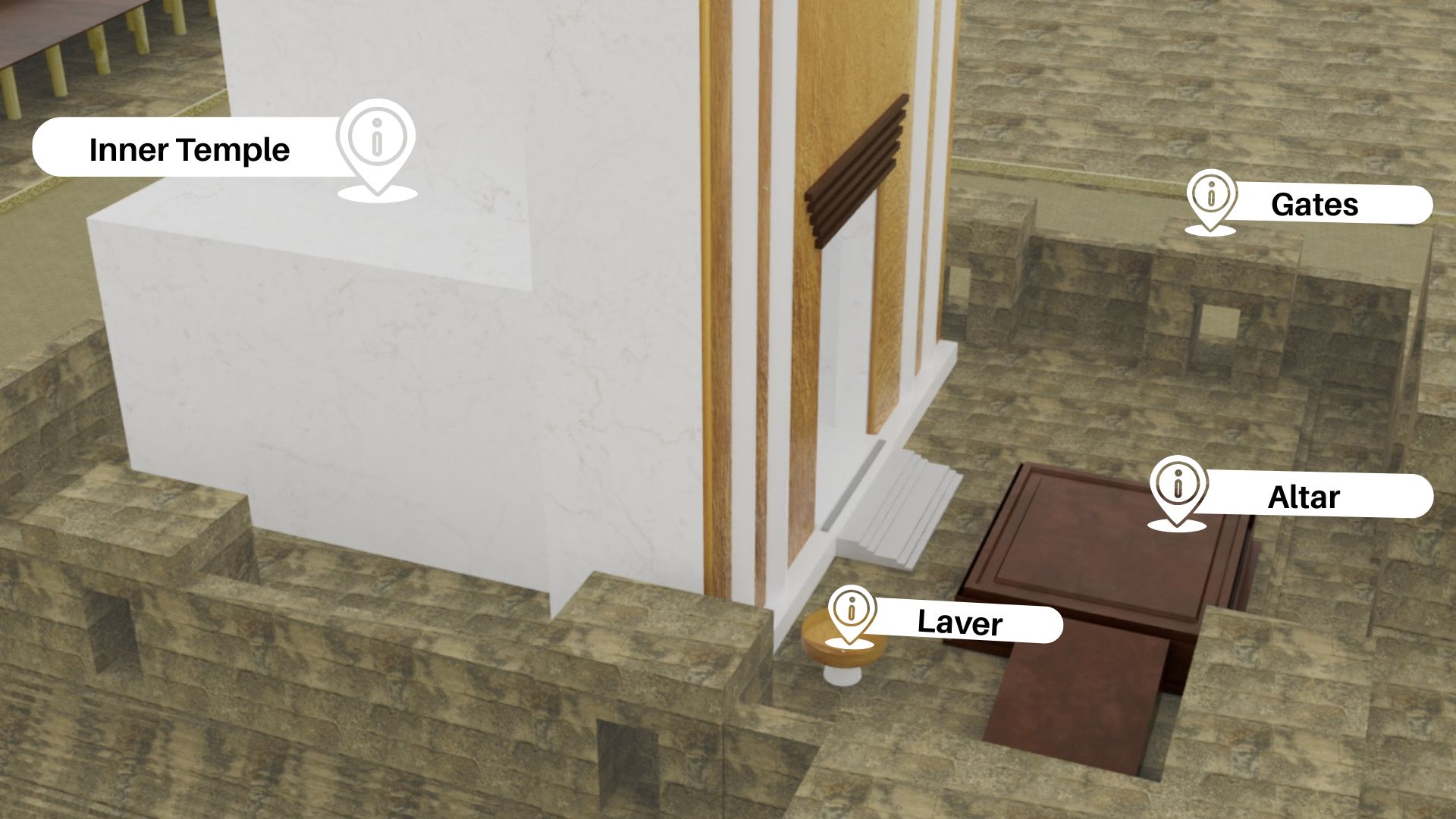
The Temple building was just beyond the altar and basin. It was 100 cubits tall and wide in the front, but only 40 cubits wide in the back. Its façade and doors were plated with gold. Twelve steps led from the Court of the Priests to the Porch of the Temple. The door into the Sanctuary had a lintel of five cedar beams. The Sanctuary was 40x20 cubits in size, and contained a lampstand, a table holding 12 loaves of bread, and an altar for incense. Beyond the sanctuary, separated by a thick veil or curtain, was the Holy of Holies, the most sacred area where God was said to dwell. This area was 20 cubits square and plated in gold. In it, the rock of the mountain – called the Foundation Rock – projected three fingerbreadths above floor level. The Ark of the Covenant would have stood on this rock in Solomon’s Temple. The Holy of Holies could only be entered by the High Priest, and only on Yom Kippur.
Above the Sanctuary and Holy of Holies was an upper chamber of the same dimensions, with trapdoors allowing for repairs and upkeep of the sacred areas. On the sides and back of the building, a ring of chambers surrounded the holy areas. There were three stories of rooms and all were interconnected. They were used by the priests for storage and necessities.